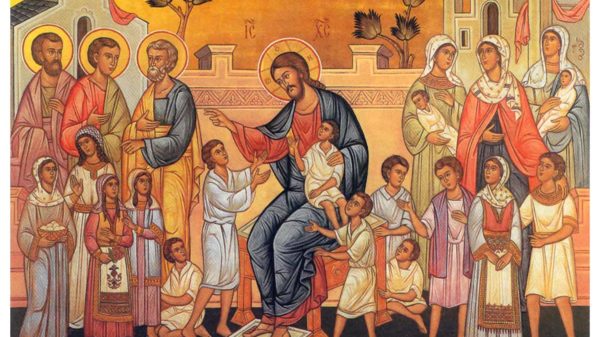Chivalry is the generic term for the knightly system of the Middle Ages and for virtues and qualities it inspired in its followers. The word evolved from terms such as chevalier (French), caballero (Spanish), and cavaliere (Italian), all meaning a warrior who fought on horseback. The term came to mean so much more during medieval times.
Chivalric orders first appeared with military activities against non-Christian states. During the Middle Ages, Western Europe aggressively sought to expand its area of control. The first orders of chivalry were very similar to the monastic orders of the era. Both sought the sanctification of their members through combat against “infidels” and protection of religious pilgrims, and both had commitments that involved the taking of vows and submitting to a regulation of activities.
13th Century conventions of chivalry directed that men should honor, serve, and do nothing to displease ladies and maidens. Knights were members of the noble class socially as bearers of arms, economically as owners of horse and armor, and officially through religious-oriented ceremony. While some were knighted on the battlefield, most spent long years as a squire, practicing the art of war while serving his master. People during the Middle Ages heard of the exploits of knights both mythical and real in epics like La Chanson de Roland and Le Morte D’Arthur.
After the Crusades, knights continued to show their prowess and skills in medieval tournaments.
Chapters
- 1. Knight Training
- 2. Chivalric Orders
- 3. Heraldry
- 4. Crusades
- 5. Tournaments
- 6. Equipment
Knight Training
Knights belonged to the noble class and were part of a military order, but not all soldiers could become knights. Those lacking the equipment, status or wealth to join an order were usually denied. However, some from the poorer class could elevate their status and be accepted into knighthood through valor on the battlefield. While Orders of female knights were rare, they did exist.
Becoming a page was usually the first step most took in the path to knighthood. Training began at a very young age. At 7, the son of a medieval nobleman or knight would be sent off to serve as a page in a lord’s castle. There, he would learn horsemanship, archery and swordsmanship, and perform various other duties around the castle.
Squires would begin training as early as 10 years, but the majority would be attached to a knight for training at age 14. A squire’s training concentrated on strength, fitness and skill with various weapons. Individual training was only part of the regimen, as knights also needed to know how to fight as part of a team of skilled horsemen. The squire would care for the knight’s horse, clean the stables, polish the knight’s armor and maintain his weapons. They would learn the chivalric codes of conduct and listen to epic tales of Roland, Charlemagne, Arthur, Percival and Lancelot.
After years of training, and usually around the age of 21, the squire would go through the dubbing ceremony. In the early Middle Ages, this was simply done with a brief, open-handed blow to the neck followed by an admonition to conduct himself with courage, bravery, skill and loyalty. After the 11th century, the Church expanded this ceremony to incorporate seeds of religious chivalry-needed to fight the Crusades-and promised in return, they would be guaranteed a place in heaven for their loyalty.
The dubbing ceremony became much more elaborate during the 11th and 12th centuries. Some would pray alone in church the night before the ceremony, wearing simple clothes to prove humility before God. The priest would bless his sword, and when presented, the new knight would kiss the hilt, which often contained religious relics.
Chivalric Orders
Knights belonged to a multitude of specific Orders, each established for one purpose or another. Most orders emphasized components of piety, faith, humility, chastity or some other worthy ideals. Colorful names for these orders emerged. The Angelic Knights, the Golden Shield, the Palatine Lion, the Thistle of Bourbon, the White Falcon and the Wing of St. Michael are but a few of the knightly orders that existed during the Middle Ages.
Some had curious names such as: the Dog and Cock; the Fools; the Scarf and the Broom Flowers; the Slaves of Virtue and Neighborly Love; the Palm and the Alligator. An order of female knights defended Tortosa in Spain from invading Moors in 1149.
Three of the most well-known, were the Hospitallers, Templars, and Teutonic knights.
Hospitallers, or Knights of St. John of Jerusalem, were the first great orders of monastic knights to appear. These knights took monastic vows and wore black habits with white crosses. They lived in a monastery that could accommodate more than 2,000 guests and still have room to care for the sick and injured. These knights formed many communities in several European countries. Hospitality was the first obligation of the order.
Templars, the second of the great military orders, was founded in the early 12th century to protect pilgrims. These knights adopted Benedictine monastic rules and wore white tunics with red crosses. Like the Hospitallers, they rose to great power in medieval Europe and established communities throughout the continent. But by the beginning of the 14th century, rumors of corruption and heresy caused King Phillip of France to command all members of the order to be jailed. Most were put to torture and burned at the stake. Grand Master Jacques de Molay was crucified. There is a theory that the Shroud of Turin is, in fact, the burial cloth of de Molay.
Teutonic Knights formed the last great chivalric order. These knights were Germanic in origin, took vows of poverty, chastity and obedience and wore white tunics with black crosses. After battling I the Crusades, this order turned its attention to the conquest of heathen Prussians and conquered the territory between the Vistula and the Memel. They were virtually destroyed by Poles and Lithuanians during a battle at Tannenberg in 1410.
Heraldry
Knights going to the first crusade saw designs incorporated into the weaponry and uniforms of the Arab and Byzantine soldiers, and adopted this practice themselves. Before, only kings and member of the noble class could posses and show coats of arms, but gradually it was acceptable for knights to do the same.
Symbolic designs held significant meaning. Few people in medieval society could read or write, and a family’s coat of arms often stood for an official stamp or signature.
Eldest sons would inherit the family coat of arms, while younger sons could alter the design slightly for their own families. But rules on heraldry were very specific. Shields could be partitioned only in certain, specific ways. Fixed sets of patterns and colors would be adopted by families and later, by towns swearing loyalty to a lord or kingdom. Real and mythological animals graced the shields of many, from bears, lions and deer, to griffins, sea creatures and dragons. Some families later added a motto to the coat of arms as a rallying cry.
Crusades
Crusades belong to that most viscous class of warfare-those undertaken in the name of faith. Medieval battles fought from the close of the 11th century through the 13th were engaged for a variety of motives, but they were, for the most part, wars over religion. The Catholic Church sought to harness both the knights’ energy and martial skills-and found a role for them in the church’s structure of society as protectors. Rules were formulated under which a “just war” could be fought and enlisted the knights to fight for them in the Crusades.
Eight crusades were fought; the first, called by Pope Urban II, taking place between 1096-1100 under the command of Godfrey de Bouillon, Raymond of Toulouse and Bohemund of Tantrum. More than 5,000 knights, joined by thousands of other soliders, peasants, men, women and children, marched eastward with the battle cry Deus Vult (It is God’s Will). Few knew anything about the difficult climate awaiting them in the Holy land, and many died along the way from disease, thirst and hunger. The first Crusade was successful for the West, but they would only hold the territory for a century before being repelled by Muslim forces.
Subsequent crusades never had the success of the first, and thousands of people perished on both sides of the battlefields. The victory of the first Crusade may have been a fluke, as the Christian army arrived in the Middle East at a time when Muslim armies were at an all-time weak point.
Later crusades were fought against Turks who were trying to destroy what was left of the Byzantine Empire, but these failed as well. Other battles, fought in Spain, and Germany would prove to be more successful.
One of the positive effects of the crusades were the advances in medicine that knights saw in their Arab and Persian opponents and brought back to Western Europe.
Tournaments
Medieval knights, when they weren’t busy enganging in battles or protecting the interests of their lord, wanted to keep their skills honed, and often challenged rival knights to tournaments. These have their roots in lance and shield training conducted by Charlemagne’s troops in the 8th and 9th centuries.
The first tournaments were mock battles that had more in common with military training than they did as a spectator sport. Jousting, where two knights would face each other atop horses, and armed with lances and shields, may have began as a way to settle disputes within the ranks. These early battles were called duels of chivalry. A knight won when he hit an opponent’s shield or helmet. Striking the opponent’s legs or hitting his horse was considered a foul. Jousting reached its height as a medieval spectator sport in the 13th century, where thousands would crowd the stands.
Sword fights with blunt blades were also part of the tournament. Most medieval weapons could have been used at some point in the competition, from battle-axes and maces to daggers and fists.
The winner often took the loser’s horse and at times, his armor.
Equipment
Medieval knights were equipped with a variety of defensive garments and weapons, and trained to use nearly every possible offensive weapon of the Middle Ages. Early knights wore chain mail and tunics bearing the symbol of the order to which he belonged. By the 14th century, chain mail and tunics had evolved into full plate armor that protected the chest, arms, legs knees and feet. Quality plate armor was nearly impenetrable. The armor included a visored helmet that would often be festooned with decorative plumage.
The knight’s shield evolved to sport the heraldry found on the family crest, or coat of arms. Most shields were made of wood, the best being constructed of numerous wood strips with the grain of each layer running at 90-degree angles.
Weapons included:
Broadsword-one of the knight’s primary weapons, often passed down through family lineage. The knight carried the sword that he was dubbed with. Many were quite elaborate, with gold, silver, encrusted with jewels or containing holy relics in the hilt.
Crossbow-one of the first banned weapons for its “unchristianlike” characteristics of causing brutal death from far away, thee ranged from simple hand-drawn devices, to larger ones requiring levers, wheels and ratchets. They were replaced with the development of the longbow.
Daggers-made of all shapes and sizes often encrusted with jewels. Blades varied from round, ice-pick like daggers to those with three blades with made wounds nearly impossible to close.
Mace-a club-like weapon with blades or points protruding from a heavy head. Each weapon was often given fanciful names such as Morgenstern (Morning Star), Godendag (Good-day), or the dark humored “Holy Water Sprinkler.
Scimitar-a curved sword that broadened to a point with one cutting edge.
Two-handed sword-popular in the 15th century and nearly 5-feet in length. It was used to make wide cutting sweeps in open areas.
War Hammer-a weapon similar to today’s claw-hammer, but larger, with a handle nearly two feet long with a thrusting point affixed to the top.












